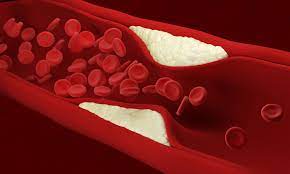
Breaking News
 NonConformist Series: Practical Wealth - Join us virtually Dec 29-30, 2025
NonConformist Series: Practical Wealth - Join us virtually Dec 29-30, 2025
 New bill would allow private citizens to fight cartels: 'WE ARE UNDER ATTACK'
New bill would allow private citizens to fight cartels: 'WE ARE UNDER ATTACK'
 Carnivore Got Me 90% There. This One Drink Changed Everything
Carnivore Got Me 90% There. This One Drink Changed Everything
Top Tech News
 Perfect Aircrete, Kitchen Ingredients.
Perfect Aircrete, Kitchen Ingredients.
 Futuristic pixel-raising display lets you feel what's onscreen
Futuristic pixel-raising display lets you feel what's onscreen
 Cutting-Edge Facility Generates Pure Water and Hydrogen Fuel from Seawater for Mere Pennies
Cutting-Edge Facility Generates Pure Water and Hydrogen Fuel from Seawater for Mere Pennies
 This tiny dev board is packed with features for ambitious makers
This tiny dev board is packed with features for ambitious makers
 Scientists Discover Gel to Regrow Tooth Enamel
Scientists Discover Gel to Regrow Tooth Enamel
 Vitamin C and Dandelion Root Killing Cancer Cells -- as Former CDC Director Calls for COVID-19...
Vitamin C and Dandelion Root Killing Cancer Cells -- as Former CDC Director Calls for COVID-19...
 Galactic Brain: US firm plans space-based data centers, power grid to challenge China
Galactic Brain: US firm plans space-based data centers, power grid to challenge China
 A microbial cleanup for glyphosate just earned a patent. Here's why that matters
A microbial cleanup for glyphosate just earned a patent. Here's why that matters
 Japan Breaks Internet Speed Record with 5 Million Times Faster Data Transfer
Japan Breaks Internet Speed Record with 5 Million Times Faster Data Transfer
Lasers and ultrasound combine to pulverize arterial plaque

By bringing ultrasound into the mix, scientists at the University of Kansas have demonstrated a new take on this treatment that relies on exploding microbubbles to destroy plaque with greater safety and efficiency, while hinting at some unique long-term advantages.
The novel ultrasound-assisted laser technique builds off what's known as laser angioplasty, an existing treatment designed to improve blood flow in patients suffering from plaque buildup that narrows the arteries. Where more conventional treatments such as stents and balloon angioplasty expand the artery and compress the plaque, laser angioplasty destroys it to eliminate the blockage.
The laser is inserted into the artery with a catheter, and the thermal energy it generates turns water in the artery into a vapor bubble that expands, collapses and breaks up the plaque. Because this technique calls for high-power lasers, it has the potential to perforate or dissect the artery, something the scientists are looking to avoid by using low-power lasers instead.
They were able to do so in pork belly samples and ex vivo samples of artery plaque with the help of ultrasound. The method uses a low-power nanosecond pulsed laser to generate microbubbles, and applying ultrasound to the artery then causes these microbubbles to expand, collapse and disrupt the plaque.

 Aluminum Causes Brain Damage
Aluminum Causes Brain Damage Advanced Propulsion Resources Part 1 of 2
Advanced Propulsion Resources Part 1 of 2

